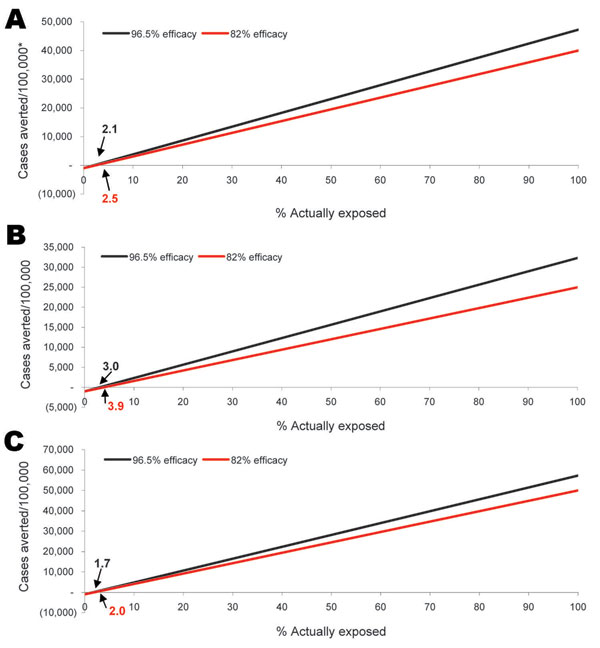Volume 14, Number 10—October 2008
Research
Prophylaxis after Exposure to Coxiella burnetii
Figure 4

Figure 4. Cases of illness averted in the general population after Coxiella burnetii exposure with the use of postexposure prophylaxis while accounting for a 1.0% probability of adverse events, broken down by virulence scenario and drug efficacy. The “best estimate” scenario (primary analysis, A) uses best estimate input values, the “less virulent” scenario (B) uses input values that result in the least harmful outcome, the “more virulent” scenario (C) applies input values that result in the most harmful outcome or worst-case scenario. Drug efficacy refers to the efficacy of doxycycline as a post-exposure prophylaxis against C. burnetii infection. Analyses for doxycycline (used by the general and high-risk populations) were run at 2 potential drug efficacies: 96.5% and 82%. The threshold points, the probability of exposure where the risk of adverse events equals the risk of illness, are noted on the graphs.